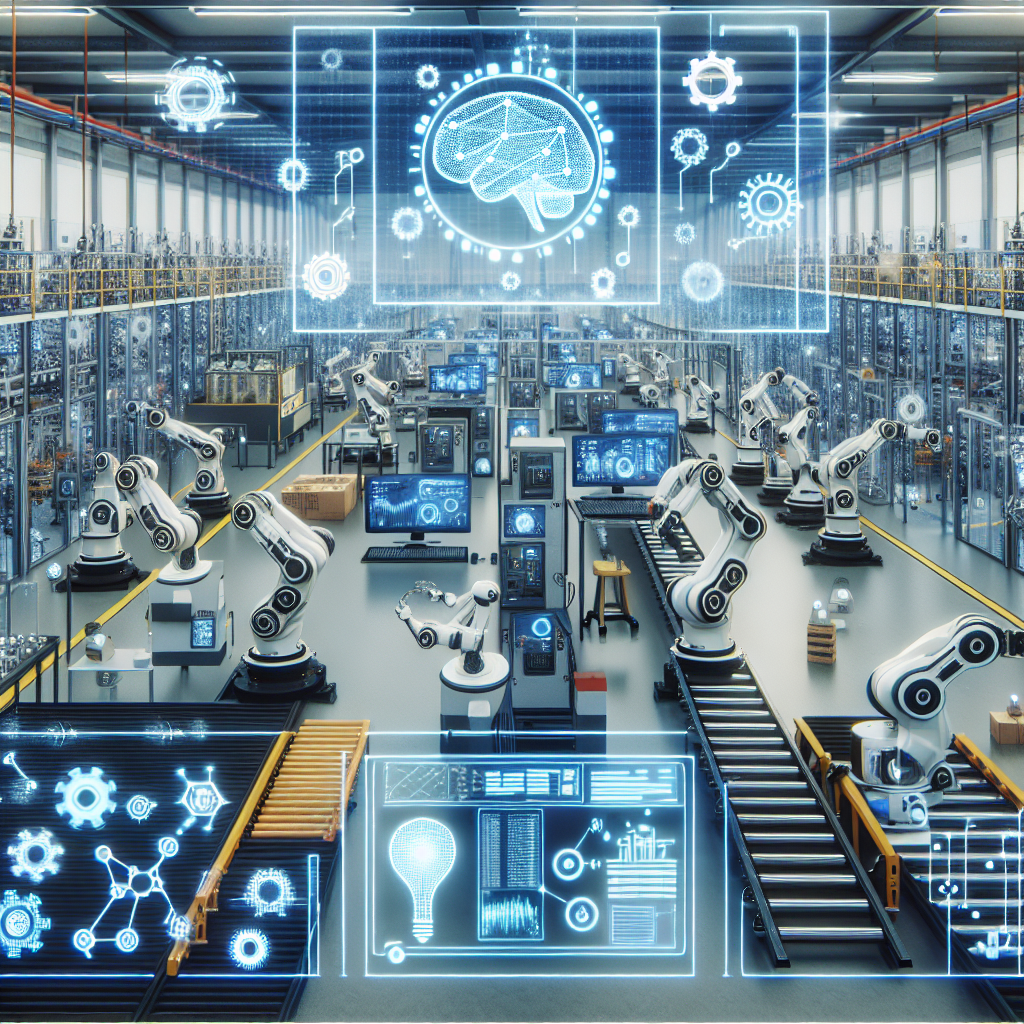Introduction
Artificial Intelligence (AI) and machine vision are revolutionizing the manufacturing industry by providing new ways to improve efficiency, quality, and safety. These technologies are changing the way manufacturers operate, enabling them to automate processes, detect defects, and optimize production. In this article, we will explore how AI and machine vision are being used in manufacturing and the benefits they offer.
AI and Machine Vision in Manufacturing
AI and machine vision technologies are being used in manufacturing in a variety of ways, from quality control and defect detection to predictive maintenance and process optimization. These technologies are enabling manufacturers to improve their operations in ways that were previously not possible.
One of the key applications of AI and machine vision in manufacturing is quality control. By using machine vision systems, manufacturers can automatically inspect products for defects, ensuring that only high-quality products are shipped to customers. These systems can detect defects that are invisible to the human eye, such as tiny cracks or scratches, and can do so at high speeds and with high accuracy.
Another important application of AI and machine vision in manufacturing is predictive maintenance. By analyzing data from sensors and other sources, AI systems can predict when equipment is likely to fail and alert maintenance teams before a breakdown occurs. This allows manufacturers to avoid costly downtime and keep their production lines running smoothly.
AI and machine vision are also being used to optimize manufacturing processes. By analyzing data from sensors and cameras, AI systems can identify inefficiencies in production lines and suggest ways to improve them. For example, these systems can identify bottlenecks in the production process and suggest ways to alleviate them, such as rearranging equipment or changing workflows.
Benefits of AI and Machine Vision in Manufacturing
The use of AI and machine vision in manufacturing offers a number of benefits, including:
– Improved quality: Machine vision systems can detect defects with high accuracy, ensuring that only high-quality products are shipped to customers.
– Increased efficiency: AI systems can optimize production processes, reducing downtime and improving overall efficiency.
– Cost savings: By preventing equipment failures and optimizing production processes, manufacturers can save money on maintenance and production costs.
– Enhanced safety: Machine vision systems can detect safety hazards in real-time, helping to prevent accidents and injuries in the workplace.
– Competitive advantage: By adopting AI and machine vision technologies, manufacturers can stay ahead of the competition and meet the demands of the market.
FAQs
Q: How does machine vision work in manufacturing?
A: Machine vision systems use cameras and image processing algorithms to analyze images of products and detect defects. These systems can inspect products at high speeds and with high accuracy, ensuring that only high-quality products are shipped to customers.
Q: What are some common applications of AI in manufacturing?
A: Some common applications of AI in manufacturing include quality control, predictive maintenance, process optimization, and supply chain management. These applications help manufacturers improve efficiency, quality, and safety in their operations.
Q: How can manufacturers benefit from using AI and machine vision?
A: Manufacturers can benefit from using AI and machine vision technologies by improving quality control, increasing efficiency, reducing costs, enhancing safety, and gaining a competitive advantage. These technologies enable manufacturers to automate processes, detect defects, and optimize production in ways that were previously not possible.
Conclusion
AI and machine vision technologies are transforming the manufacturing industry by enabling manufacturers to improve quality, efficiency, and safety in their operations. By using these technologies, manufacturers can automate processes, detect defects, and optimize production in ways that were previously not possible. As AI and machine vision continue to advance, we can expect to see even greater innovations in the manufacturing industry.

